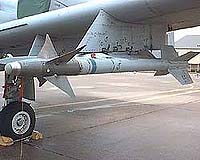| . |  |
. |
Beirut, Lebanon (UPI) Aug 28, 2009 Saudi Arabia is reported to be in the "final stage" of negotiating a deal with Russia to buy up to 30 assault helicopters, a major departure by a key U.S. ally that is slated to get advanced U.S. weaponry worth billions of dollars over the next decade. Jane's Defense Weekly, published in London, says in this week's edition that the multibillion-dollar deal was first proposed in November 2007. Russia's Kommersant newspaper, which has often broken stories about Russian arms sales, reported on July 15, 2008, that Riyadh had offered to award Moscow major arms contracts in return for Russia curbing its cooperation with Iran. The Saudis reportedly said they were interested in air-defense systems, main battle tanks and helicopters. Russia is the major supplier of military equipment to Iran, which has been under a U.S.-led arms embargo for three decades. Its scientists have played a key role in Iran's nuclear and missile programs. It is also building a nuclear reactor at Bushehr, on Iran's northern Gulf coast, despite U.S. objections. RIA Novosti on Aug. 25 quoted a source close to the negotiations on the Mil Mi-171B as saying, "We're in the final stage of talks for the purchase of 30 helicopters and hope to sign the deal in September." The Mi-171B is the export version of the Mi-17 transport/assault helicopter, which is in service in some 80 countries. RIA Novosti said that when the Mi-171 deal was proposed in 2007, it was also suggested that Saudi Arabia should also purchase the Mil Mi-35 assault helicopter, known in the West by its NATO designation "Hind." Jane's said there had been "no mention" of that proposal since then. The heavily armed and armored gunship has a fearsome reputation and wreaked havoc against Islamist fighters during the 1979-89 war in Afghanistan. Moscow has long sought to carve a slice of the lucrative Gulf arms market, where the United States, Britain and France have sustained their defense industries over the years as the main suppliers of weapons and equipment. The Saudis, like all the Sunni-led regimes across the Arab world as well as Israel, are alarmed at Shiite Iran's nuclear program, its drive to develop a large arsenal of long-range ballistic missiles and its expansionist policies. Riyadh's reported 2008 offer to Moscow stems from that deep-rooted fear of Iran and would explain the reasoning behind the reported helicopter deal. The military value of the Mi-171Bs would be extremely limited to Saudi Arabia because they are largely incompatible with the Saudi military's U.S. and British equipment. Maintenance and logistics will be comparably more expensive because it cannot be used for other systems in the Saudi inventory. But the reported deals are essentially political rather military. Kommersant reported in July 2008: "The kingdom's leadership advised Moscow to phase out cooperation with Tehran in return for promised attractive contracts with Saudi Arabia. "In essence, Russia was offered to become a major partner in the Middle East." The newspaper said the Saudi offer of big-ticket arms sales had been proposed by the kingdom's foreign minister, Prince Saud al-Faisal, in the name of King Abdallah during a meeting in Moscow. The Saudi national security adviser, Prince Bandar bin Sultan, an influential former ambassador to the United States, discussed the proposal in detail when he met Russian President Dimitry Medvedev and Prime Minister Vladimir Putin in Moscow in July 2008. Share This Article With Planet Earth
Related Links The Military Industrial Complex at SpaceWar.com Learn about the Superpowers of the 21st Century at SpaceWar.com
 Mideast arms race defies economic slowdown
Mideast arms race defies economic slowdownAmman, Jordan (UPI) Aug 27, 2009 With Saudi Arabia spearheading the arms race in the Middle East, defense spending in the region will exceed $100 billion by 2014, according to a study released by Frost & Sullivan. "Saudi Arabia, the United Arab Emirates and Israel are poised to be the region's four biggest spenders on defense," the report said. Last year, the U.A.E. poured some $4 billion into its military ... read more |
|
| The content herein, unless otherwise known to be public domain, are Copyright 1995-2009 - SpaceDaily. AFP and UPI Wire Stories are copyright Agence France-Presse and United Press International. ESA Portal Reports are copyright European Space Agency. All NASA sourced material is public domain. Additional copyrights may apply in whole or part to other bona fide parties. Advertising does not imply endorsement,agreement or approval of any opinions, statements or information provided by SpaceDaily on any Web page published or hosted by SpaceDaily. Privacy Statement |